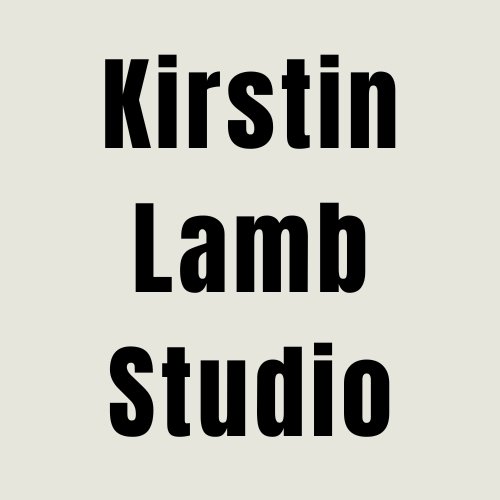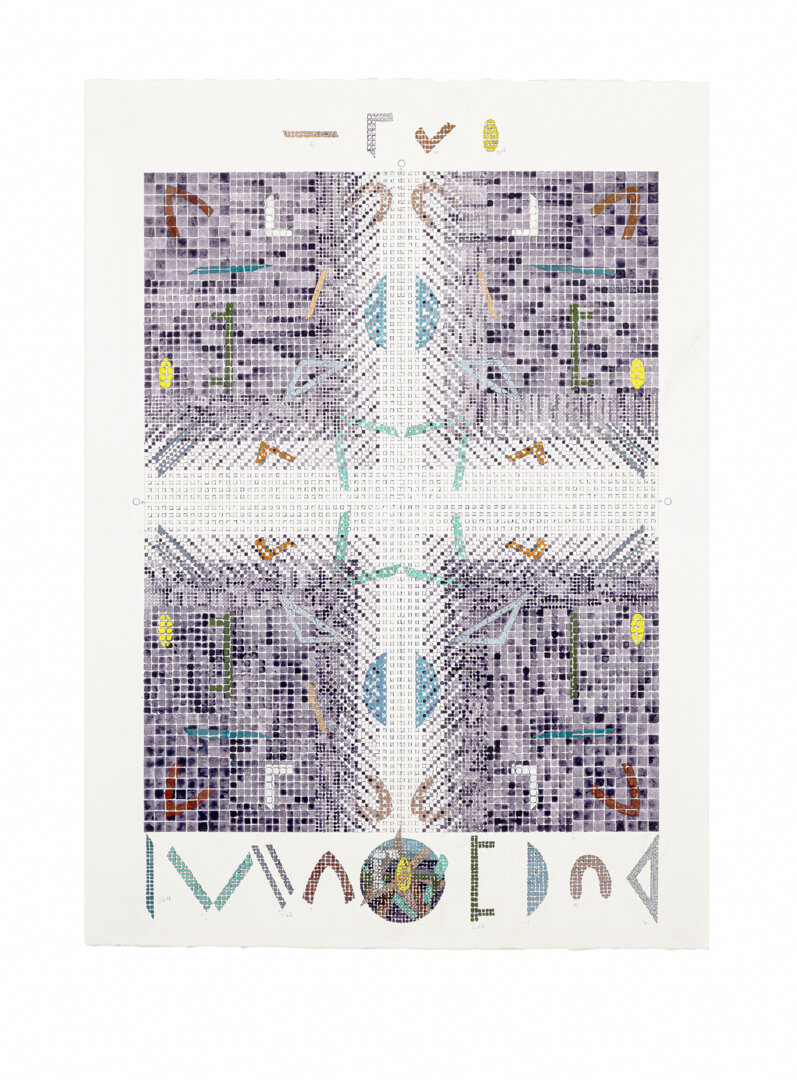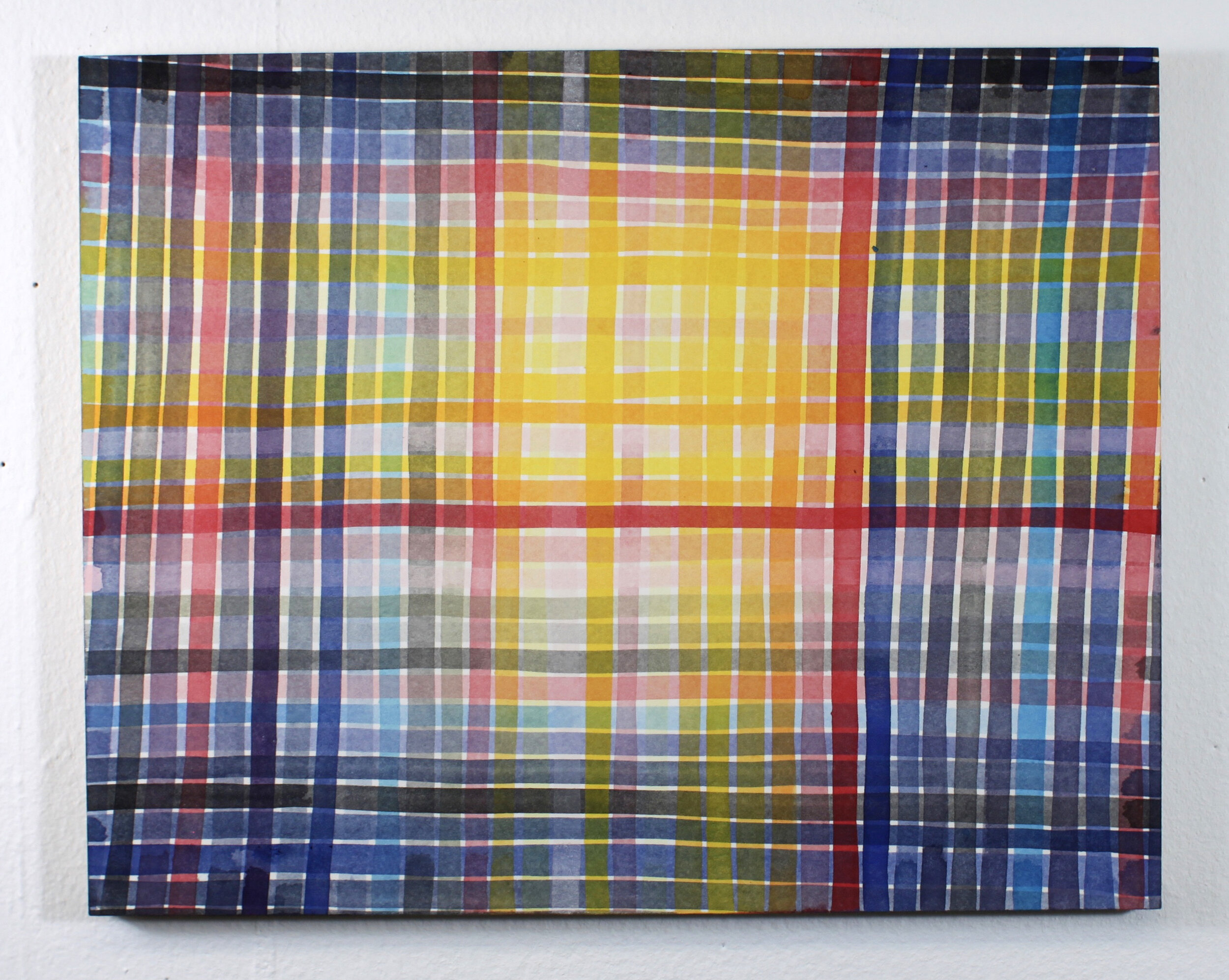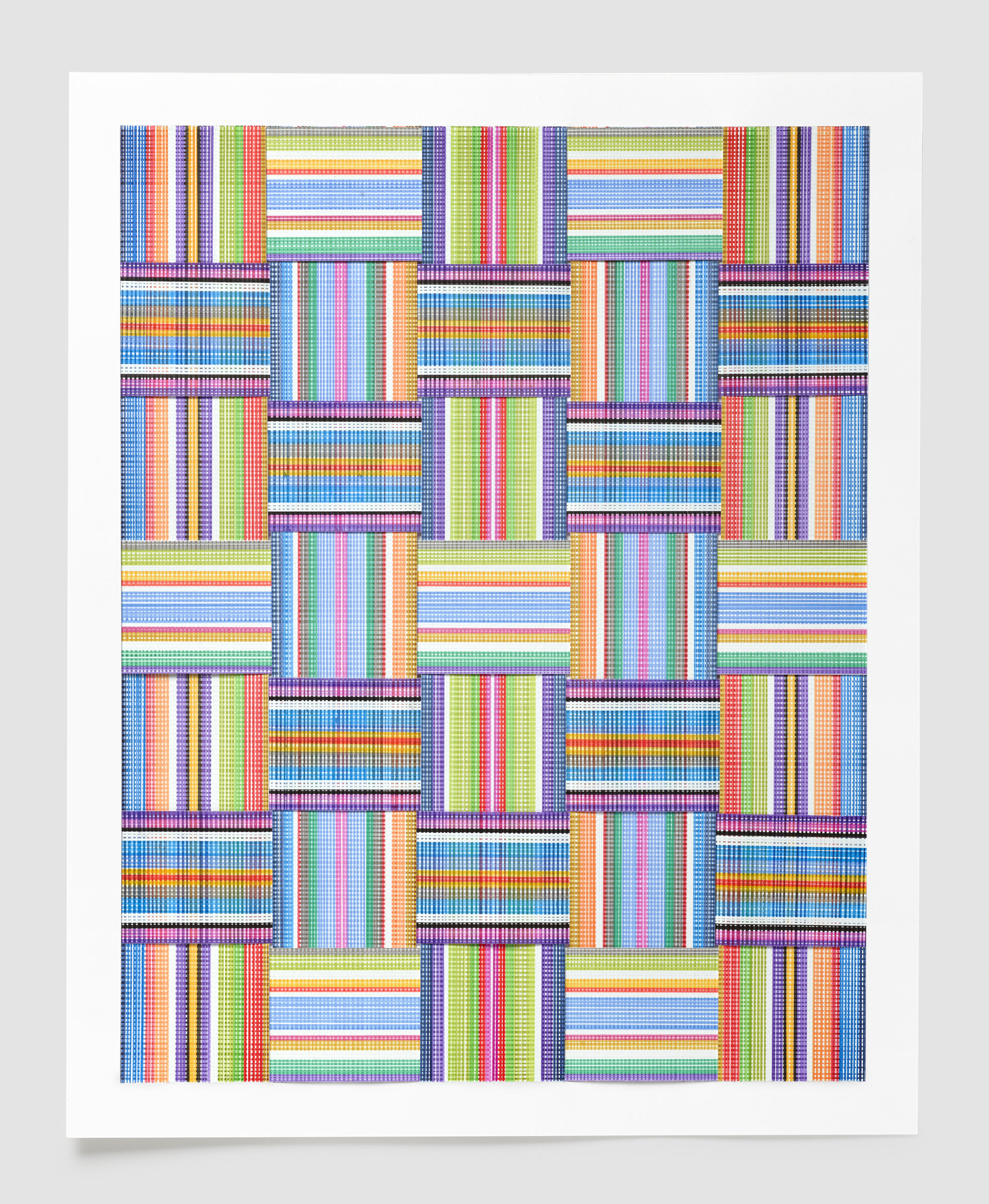New Order
Grids and Friends
December 8th, 2019 – March 6th, 2020
Reception Thursday December 12th, 2019 / 5:30-8pm
Curated by Kirstin Lamb
The Yard, Williamsburg
33 Nassau Avenue, Brooklyn NY 11222
To purchase works follow this link: https://kirstinlamb.squarespace.com/new-order
Kirstin Lamb Curatorial and The Yard, Williamsburg are pleased to present a group show featuring artists examining the compositional basic of the grid.
The grid is defined in part by Miriam Webster dictionary as “a network of uniformly spaced horizontal and perpendicular lines” and the dictionary adds a modifier “as in a map.” Other definitions include language usage in power conduction and organization. According to many sources the grid was considered a 20thcentury aesthetic hallmark of modernity, none more memorable than Rosalind Krauss’ seminal “Grids” published in October magazine in the summer of 1979.
Rereading “Grids” in 2019, Krauss’ language about the grid reads harsh and judgmental, for her the modernist basic is “stringent and manifest” and “the grid announces modern art’s will to silence, its hostility to literature, to narrative, to discourse.” Those who explore the grid could not have found “less fertile ground” and Krauss decries the focus on surface and the rigidity of the narrative of modern growth and innovation.
I wish to explore where contemporary artworks derive strength and power from the grid, but also where they defy its rules. I’m interested in a definition of the grid that is focused on the making of artwork upon textiles and cross braced panels and stretchers. These contemporary works place surface as a search for base layers, messy underpinnings, human sources of mechanical materials. Painters in 2019 are making loose gestures at the grid without pushing too hard. We know our textiles and our ground matter to the end result, as does the history of 20th century painting, but we also willfully play with the edges.
The grid is used as a tool to reign in seductive paint, mark-making and imagery. Kathleen Kennedy Poe’s abstractions loosely lick at grid-like organization while making thick cake strokes of full bodied paint. Poe’s canvases read like frosting, you can tell the order in which they were gently or vigorously troweled on, but the whole composite sings together as a maelstrom of candy and color. Jeanne Arthur derives organization from a layer of lines tamping down her effervescent tendrils of floral and coral-like abstractions. Nested beneath a light layer of lines is a kind of diving bell as well as an array of aquatic life, some seemingly more gendered in its sweet roundness against the line work.
Tara Lisa Foley’s artworks gesture toward a digital sublime whilst rooting her practice firmly in the handmade, from mark-making that speaks to embroidery and cross stitch, to hand screened grids on paper and flat woven tapestry. She invokes the digital to speak to the handmade in an ethereal mashup, unsure where the future may lead.
Those artists that work directly with fabric or fabric metaphors use both a sweetness and a contemporary distance, a kind of double punch. Andrew Mowbray makes remarkable quilts using tyvek that look much like a hybrid of a security pattern, bar code and wedding quilt. Each hand stitched, the warmth of the mark comes in the handmade, but also the careful piecing of the work. Tim Doud utilizes carefully sliced patterned swatches of fabric, directly collaging them in his abstractions. The fabrics function like a dandyish suit for a series of abstractions toying with the limits of the rectangle and torquing of an ellipse.
A handful of artists in this show observe from life and find the grid, which is then softened by paint and the drawing hand of the maker. Laura Braciale makes everyday scraps sing in elegantly simple compositions, carefully compared, the grid underpinning every move by virtue of each object’s manufacture. She creates images by looking plainly at each found thing plainly and then comparing the objects to one another. The images that result have more in common with the poetry than the ordinary objects she depicts or the rigidity of the grid. Nina Belluci images her painting studio’s windows using the cast light and shadow of the remarkably bright light in the day as it travels across the space. I personally found her use of these gridded window pane light shadows in abstraction particularly compelling as the studio she was rendering was one I had occupied for 2-3 years in Waltham, MA. The warmth an familiarity followed in the images.
Rebecca Roberts makes mesmerizing plaids with colors sourced from the images and pages of the New York Times, her colors, tending toward the black of type and printed matter, sometimes pop with the palette of the news of the day. Dennis Congdon finds the grid behind the surface of the image, making pictures of billboards propped up on precarious mountains of stones and piles of dirt. In some manners both observed and invented, Dennis cartoons the backside of creativity, a comedic look at a painters psyche, the inner workings of a flat thing itself very simple and clear cut. Carly Glovinski locates her grids in the familiar objects of the summer house or New England family life, crafting them with an elegant attention to detail and a crispness that makes chair caning seem both nostalgic and a new abstraction.
Candice Smith Corby makes delicate images of pillow forts and towers of blankets and sheets, complete with ticking stripes and legacy plaids in carefully observed drapes and soft lines. Each picture looks like a hand-crafted fort that Candice first inhabited with her family and then, lovingly rendered in light touches of gouache. Coral Woodbury inhabits the abstractions of Anni Albers, lovingly re-animating them with her own take in oil paint, learning the grid and its moves as a painter of figures. Coral is a greatly accomplished oil painter who has taken to imaging women artists of past centuries, and this interpretive copying is a new way for her to take on the visages of female art heroes and unsung talents alike.
Lauren Bessen is using both an observational technique in grabbing her palette from life study and environment and the organization of the scale of the paper and the mark to make her mesmerizing stripe pictures, which I read here as a lightly formed grid. Each palette feels drawn directly from the atmospheric moment when it was created, as if Bessen was peering out her window at the sky to mix each color as a record of the passing light. The repetition of the rigid strategy mixed with the soft buckling of the paper and brush make for a transcendent set of rainbows.
The grid still holds as a strong framework for abstraction, albeit I see my grids and friends bending beyond the grid, toying with its edges, letting softness squish out or neon seep in. Mark Joshua Epstein utilizes the grid to build loose brushy abstractions in his work on paper, an inspiring riff on his large body of painted shaped work. In the work lent for this show, Epstein toys with tile-like pattern to play off a large gestural mark in a composition that is both wiley and seductive. Sae A Lee works with a lush array of color, reigned in by a grid that reads like squishy bathroom floor tile. Her marks play with rushes of pours, light and heavy touches of the brush, and then flourishes of spray paint and high contrast to create an alluring landscape of shape and color.
Kate Bae utilizes her grid to make the quietest work in the show, a rolled and folded paint object that reads more like a strange flower garden than an abstraction. Each hand-crafted roll sits carefully nested with the next creating a lush vibration in the all white composition. Mel Prest utilizes her offset grids as warm embraces, locating their sources more in op art and the process of touching the surface than in the severity of the grid. Each work vibrates more like neon Californian Bridget Riley than something inert, rigid.
Rather than Krauss’ “withdrawal from the real,” the grids and friends making grids I look at in 2019 are makers moving toward re-aligning with the mark, the handmade and the maker in a moment of digital overwhelm. The grid is now a given, our chances to move outside of its frame are necessarily latticed upon it.
Please join us for our artist reception on December 12, from 5:30-8pm. Many of the artists will be in attendance.
Hours for the Yard, Williamsburg
Monday-Friday 9:30am – 4:30pm
And by appointment with:
Kirstin Lamb Curatorial
https://kirstinlamb.squarespace.com/kirstin-lamb-curatorial
Kirstin.Lamb@gmail.com
617-270-8357














































